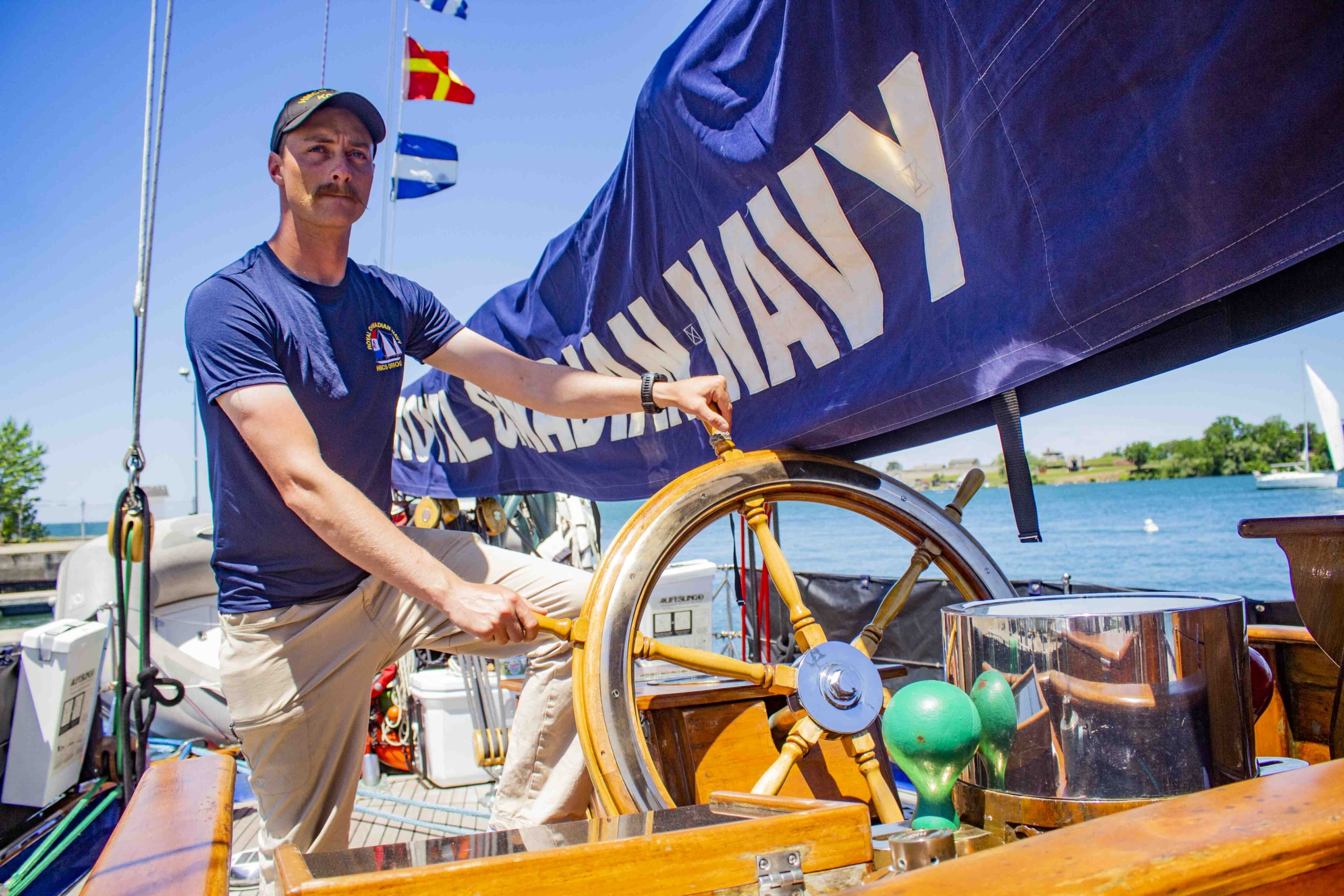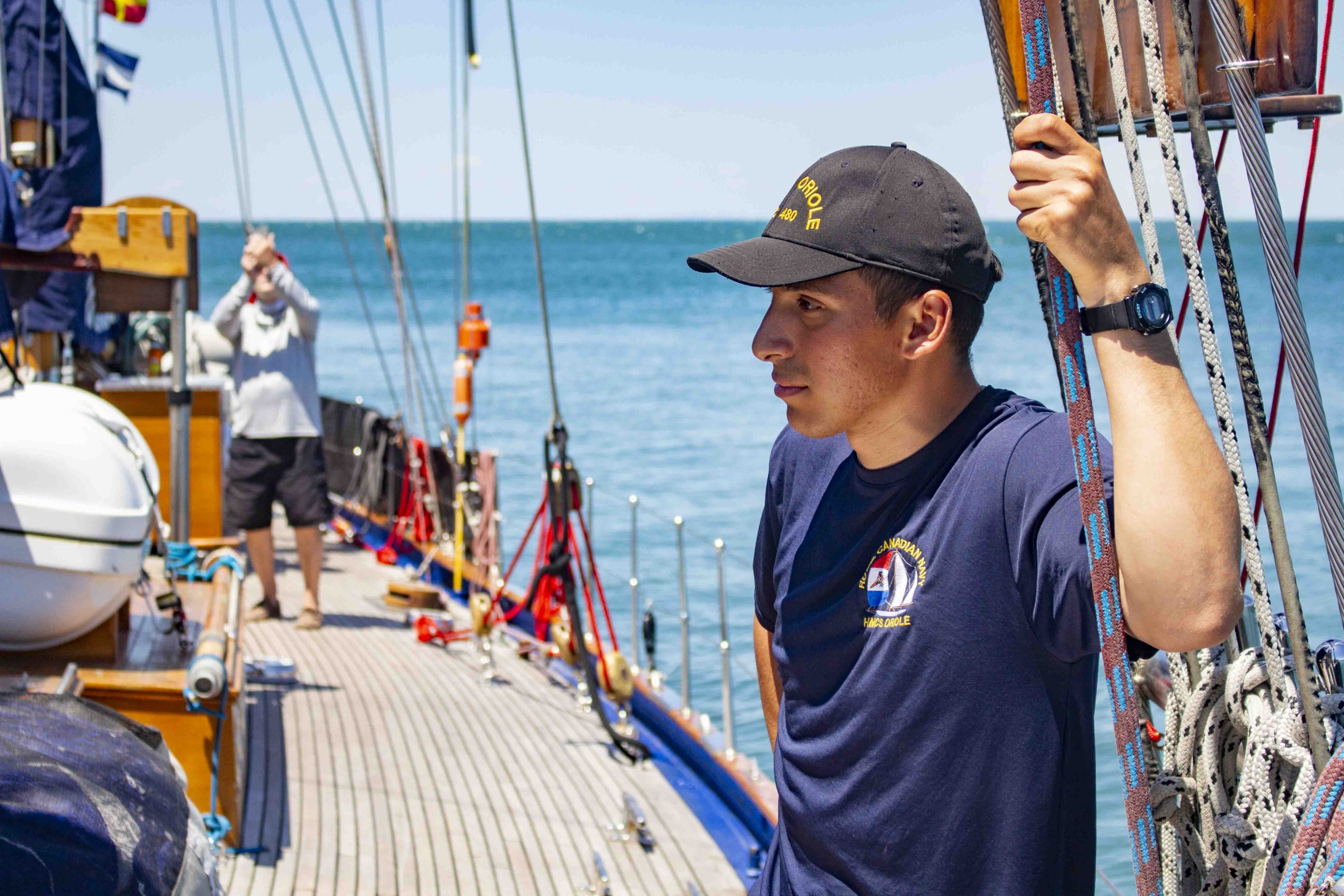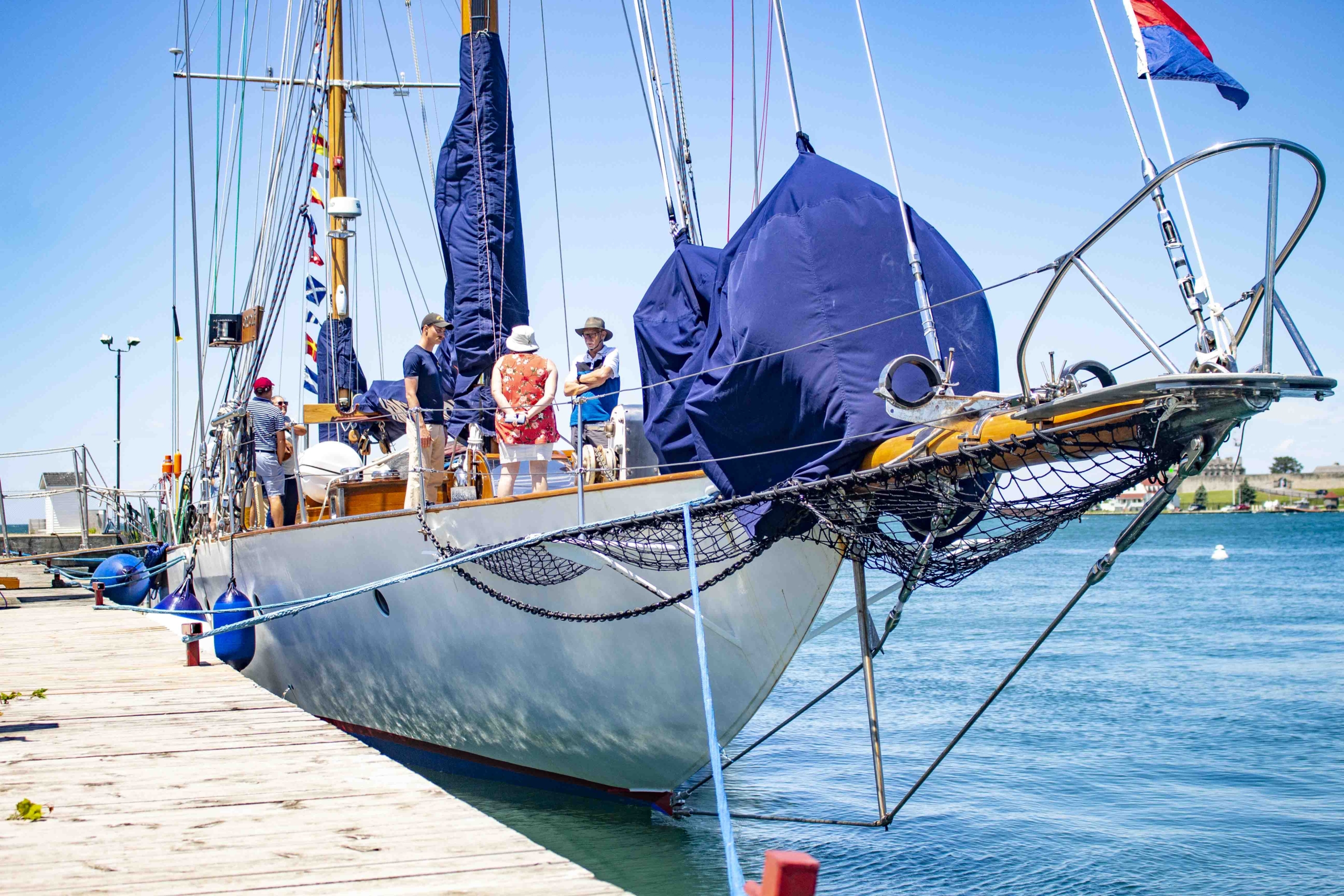Grand sailing vessel HMCS Oriole is part of mission to recruit 1,000 sailors
The HMCS Oriole, the Royal Canadian Navy’s oldest ship, docked at the NOTL Sailing Club from June 17 to 20.
The ship’s executive officer, Lt. James Craigie, said working on the sail-powered tall ship was possibly the best position in the navy.
A reporter from The Lake Report spent the better part of two hours aboard the ship, talking with the crew and appreciating a well-kept relic from the age of sail.
Indeed, being on the ship evoked some of the immortal opening lines of Herman Melville’s legendary novel “Moby Dick,” as the author describes his and humanity’s fascination with the sea.
“If they but knew it, almost all men in their degree, some time or other, cherish very nearly the same feelings as me towards the ocean,” Melville writes in the opening of the novel.
Even for members of the navy, getting the chance to train and work on a true sailing ship of yore provides special and unique experiences.
“You get a better appreciation for the sea itself. You are closer to the water so you feel the spray on your face, especially with an open bridge like this,” said Craigie.
“You’re out in the element, not protected by the bridge or the bridge windows. You’re in (the sea), you’re not just looking at it.”
THE SHIP
Craigie gave detail about nearly every aspect of the ship, far too much for a single story. Here are some of the pertinent details.
The HMCS Oriole was built in 1921 to serve as the flagship for the Royal Canadian Yacht Club in Toronto. It was commissioned into the navy in 1954 and is the oldest ship at the navy’s disposal.
It has a twofold use: as a training vessel for sailors and an outreach vessel for the public.
The Oriole is a 102-foot long relative of the schooner. Craigie described it as a “Bermuda catch.”
It has a draught of nine feet and a maximum width of 19.5 feet. One thing that differentiates it from a schooner is the size and positioning of its masts.
The main difference is its mizzen mast (or aft, or, in layman’s terms, rear mast) is smaller than the main mast and set farther aft, according to the navy’s website.
Its mast stands at 70 feet while the main is 103 feet.
It isn’t just the nearness of the ocean, as described by Craigie, that makes the Oriole a unique, one-of-a-kind experience for Canadian military sailors.
The ship, when fully rigged, sets 13,133 square feet of Dacron sail, every inch of it manipulated entirely by hand.
“Usually we have six on a sled team, three people on the halyard, one person on the downhaul and the chief bosun mate directing everyone.”
It’s a physically demanding job and necessitates teamwork in order for the ship to run smoothly. That’s why the ship is used as a training ground. There is no automated system to fall back on when the going gets rough.
And it can get rough, as anyone who has spent time on the open ocean or a windy day on one of the Great Lakes can attest. All this work makes it fairly easy for the sailors to pass their time when they are off shift.
“A lot of people just sleep because you’re tired after a day of this. It’s exhausting,” said Craigie.
He said the sailors work three hours on with six hours off.
The ship, while fitted with extensive sails, does have an engine. But it travels faster when at full sail than the motor could ever take it, Craigie said.
He said the fastest he has ever gone on the ship at full sail is 14.2 knots. The engine usually cruises around six but can be pushed to 10, though Craigie said that is not good for the engine and virtually never happens.
As the executive officer of the ship, Craigie’s responsibilities generally revolve around leading navigation and directing where the helmsman steers the ship.
“I’m the one plotting the course and I usually have a helmsman. I order him a course to steer, he looks at the compass and follows the course.”
And he truly has some state-of-the-art equipment to do that with.
“We have the same thing that we have on all the warships. So, our electronic charting system, where I put all my tracks in, it’s the same thing you would find on a Halifax class frigate or a winter class submarine.”
THE MISSION
“The current mission is we are doing a huge outreach. The navy’s short about a thousand personnel.”
He said the age cut-off for applying to join the navy is 60.
“We’re supporting the recruiting operation that’s ongoing right now to recruit a thousand individuals into the navy. It’s been a downtick since COVID and we’re trying to turn that around.”
The current mission has taken the Oriole from the docks of Halifax down the St. Lawrence River and into the Great Lakes where she started 101 years ago.
The mission ends on Canada Day when the Oriole reaches Sault Ste. Marie on the St. Mary River, between Lakes Superior and Huron.
Sailing up river on the St. Lawrence offered the toughest challenge of the entire cruise.
“There was one point around the Richelieu rapids that we were full bore on the throttle and we were barely making headway. We were just going left and right in the river,” said Craigie.
“At one point the current was almost nine knots. We were considering turning around, dropping anchor and just waiting for the tide to turn.”
In the heyday of river sailing, ships would often have to bushwhack up river when the current was too strong. This old sailing term means crew members would literally pull the ship up the river with ropes as they walked along the shoreline, according to the Collins Dictionary.
Or, if you like to learn from tradition, “Now the current’s got her boys, we’ll take in some slack. We’ll float her down to Shawneetown and bushwhack her back,” goes the lyrics to the old American river boaters song “Hard on the Beach Oar.”
Unfortunately, the crew of the Oriole did not have any shanties prepared to sing at harbour but considering how hard they worked to get the ship to NOTL it is barely worthy of note.
But we’re sure the men and women of the HMCS Oriole will continue to impress Canadians as they sail to their recruiting mission’s end, making harbour between here and the Sault.













